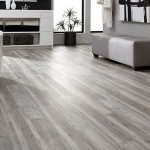```html
Utility Trailer Flooring Replacement: A Comprehensive Guide
Utility trailers are indispensable tools for hauling a diverse range of materials, from landscaping supplies and construction materials to recreational vehicles and personal belongings. The floor of a utility trailer endures significant stress and wear, making it susceptible to damage over time. Damage can range from minor scratches and dents to more severe issues such as rot, warping, and complete structural failure. Replacing the flooring is a crucial maintenance task that ensures the trailer's safety, functionality, and longevity.
This article provides a comprehensive guide to utility trailer flooring replacement, covering the necessary steps, materials, and considerations for a successful project. The information presented is intended for individuals with moderate DIY skills and access to common tools. If unsure about any aspect of the process, consulting a qualified professional is strongly advised.
Assessing the Existing Flooring
Before undertaking any replacement work, thoroughly assess the condition of the existing trailer floor. This assessment will help determine the extent of the damage, the type of replacement material required, and any underlying structural issues that need addressing.
Begin by visually inspecting the entire floor surface. Look for signs of rot, especially around the edges and seams. Rotting wood will often be soft, discolored, and may crumble easily when probed with a screwdriver or similar tool. Check for warping, which can cause unevenness and make loading and unloading difficult. Examine the floor for cracks, splits, and holes, as these compromise the floor's structural integrity and allow moisture to penetrate, accelerating deterioration. Pay close attention to areas that frequently bear heavy loads or are exposed to the elements. These areas are more prone to wear and tear.
In addition to visual inspection, physically test the floor's stability. Walk across the entire surface, paying attention to any soft spots or areas that flex excessively. These areas indicate underlying damage and may require reinforcing the frame or replacing supporting members.
Finally, inspect the trailer's frame for rust or corrosion. A compromised frame can weaken the floor's support, leading to premature failure of the new flooring. Address any frame issues before proceeding with the flooring replacement.
Selecting the Appropriate Flooring Material
Choosing the right flooring material is critical for ensuring the durability and longevity of the replacement floor. Several options are available, each with its own advantages and disadvantages. The selection should be based on factors such as the type of cargo typically hauled, the climate, and the desired level of durability.
Treated Lumber: Treated lumber is a common and cost-effective option for utility trailer floors. The treatment process protects the wood from rot, insects, and fungal decay. However, treated lumber can still be susceptible to warping and splitting over time, especially if exposed to prolonged moisture. Consider using pressure-treated lumber rated for ground contact for optimal durability. Popular choices include pine and fir, depending on local availability and cost.
Marine-Grade Plywood: Marine-grade plywood is specifically designed for use in wet environments. It is made with waterproof glue and typically uses durable hardwood veneers. While more expensive than treated lumber, marine-grade plywood offers superior resistance to moisture and rot, making it a good choice for trailers frequently exposed to the elements. It’s important to note that marine-grade plywood may still require a protective coating or sealant for optimal long-term performance.
Steel: Steel flooring offers exceptional durability and strength. It is resistant to rot, insects, and fire. However, steel is also heavier and more expensive than wood alternatives. Steel flooring can also be prone to rust if not properly coated and maintained. Consider using steel for trailers that regularly haul heavy or abrasive materials.
Aluminum: Aluminum flooring provides a good balance of strength and weight. It is resistant to rust and corrosion, making it suitable for use in various climates. However, aluminum is generally more expensive than steel and may be more susceptible to dents and scratches. Aluminum is a good choice for trailers where weight is a critical factor.
Composite Materials: Several composite materials are available that offer a combination of durability, weather resistance, and light weight. These materials often incorporate recycled plastics and wood fibers. Composite flooring can be a more environmentally friendly option, and it typically requires less maintenance than traditional wood flooring. However, composite materials may be more expensive than treated lumber.
When selecting the material, consider the thickness required for the intended load. Thicker flooring will provide greater strength and resistance to damage. Consult with a lumberyard or trailer supply store for recommendations based on specific needs.
Step-by-Step Flooring Replacement Process
The following steps outline the process for replacing the flooring on a utility trailer. Safety precautions should be observed throughout the project, including wearing safety glasses, gloves, and appropriate footwear. Work in a well-ventilated area, especially when using paints, sealants, or other chemicals.
1. Removal of the Old Flooring: Begin by removing any screws, bolts, or nails that secure the old flooring to the trailer frame. A cordless drill with appropriate bits is helpful for this task. Be careful not to damage the frame during removal. If fasteners are rusted or seized, use a penetrating oil to help loosen them. In some cases, it may be necessary to cut the fasteners with a reciprocating saw or grinder.
Once the fasteners are removed, carefully pry up the old flooring. A pry bar or crowbar can be used for this purpose. Work slowly and methodically to avoid damaging the trailer frame. If the flooring is heavily damaged or rotted, it may come apart in pieces. Dispose of the old flooring responsibly.
2. Frame Inspection and Repair: With the old flooring removed, thoroughly inspect the trailer frame for any signs of rust, corrosion, or damage. Use a wire brush or grinder to remove any loose rust. Apply a rust converter or primer to protect the frame from further corrosion. Repair any damaged sections of the frame by welding in new steel or reinforcing existing members. Ensure that the frame is level and square before proceeding with the new flooring installation.
3. Preparing the New Flooring: Measure the trailer bed accurately and cut the new flooring material to size. Use a circular saw or jigsaw for cutting wood or composite materials. Use a metal-cutting saw or grinder for cutting steel or aluminum. Ensure that the cuts are straight and accurate. Consider adding a slight bevel to the edges of the flooring to prevent splintering or chipping.
If using wood flooring, apply a sealant or stain to protect the wood from moisture and UV damage. Allow the sealant or stain to dry completely before installing the flooring. Consider applying a sealant to the underside of the flooring as well for added protection.
4. Installing the New Flooring: Position the new flooring onto the trailer frame. Ensure that it fits snugly and aligns properly. Secure the flooring to the frame using screws, bolts, or nails. Use fasteners that are appropriate for the flooring material and the frame. Space the fasteners evenly across the floor surface to provide adequate support.
Pre-drilling pilot holes for the fasteners can help prevent splitting or cracking of the flooring. Countersinking the fasteners will create a flush surface and prevent them from snagging on cargo. If using steel or aluminum flooring, consider welding the flooring to the frame for added strength and security.
5. Finishing Touches: Once the flooring is secured, inspect the entire surface for any gaps or imperfections. Fill any gaps with caulk or sealant. Apply a protective coating to the edges of the flooring to prevent moisture penetration. Install any trim or molding to provide a finished look. Ensure that all fasteners are properly tightened and secure.
Consider adding tie-down points or D-rings to the floor for securing cargo. These can be bolted or welded to the frame. Finally, inspect the trailer's lights and wiring to ensure that they are functioning properly. Replace any damaged or worn components.
Essential Tools and Materials
A successful utility trailer flooring replacement requires the right tools and materials. Gathering everything beforehand will streamline the process and minimize disruptions.
Essential Tools:
- Safety glasses
- Gloves
- Tape measure
- Pencil or marker
- Circular saw or jigsaw (for wood/composites)
- Metal-cutting saw or grinder (for steel/aluminum)
- Cordless drill with various bits
- Socket set and wrenches
- Pry bar or crowbar
- Hammer
- Wire brush or grinder (for rust removal)
- Welding equipment (optional, for steel/aluminum flooring)
Essential Materials:
- Replacement flooring material (treated lumber, marine-grade plywood, steel, aluminum, or composite)
- Fasteners (screws, bolts, or nails)
- Sealant or stain (for wood flooring)
- Rust converter or primer (for steel frame)
- Caulk or sealant
- Trim or molding (optional)
- Tie-down points or D-rings (optional)
- Penetrating oil (for rusted fasteners)
This list provides a general guideline, and specific requirements may vary depending on the chosen flooring material and the trailer's construction. Consulting with a hardware store or trailer supply specialist can provide tailored recommendations.
```
Utility Trailer Floor Replacement

Utility Trailer Deck Replacement And Rebuild W Dr Joe

Apitong 2x8 Full Sawn Rough Heavy Duty Trailer Deck Boards

Utility Trailer Floor Replacement

Trailer Flooring Guide

Semi Trailer Wood Floor Utility Keystone S

How To Replace Trailer Deck Boards Without Cutting Welds

Is Ipe Wood Decking Good For Utility Trailers Advantagelumber Blog

Best Trailer Wood Decking Options Trailerdecking Com

Semi Trailer Wood Floor Utility Keystone S
Related Posts








